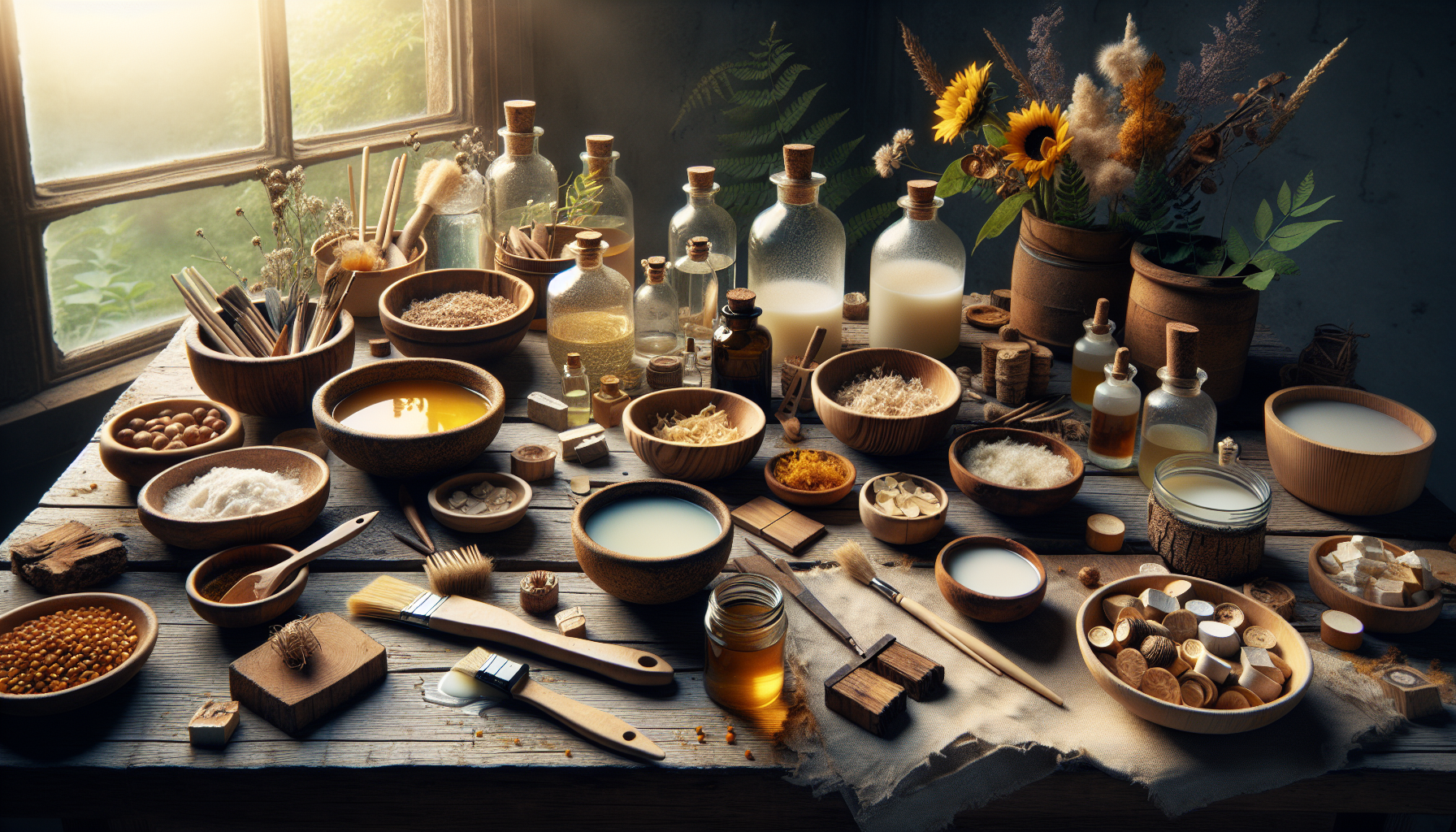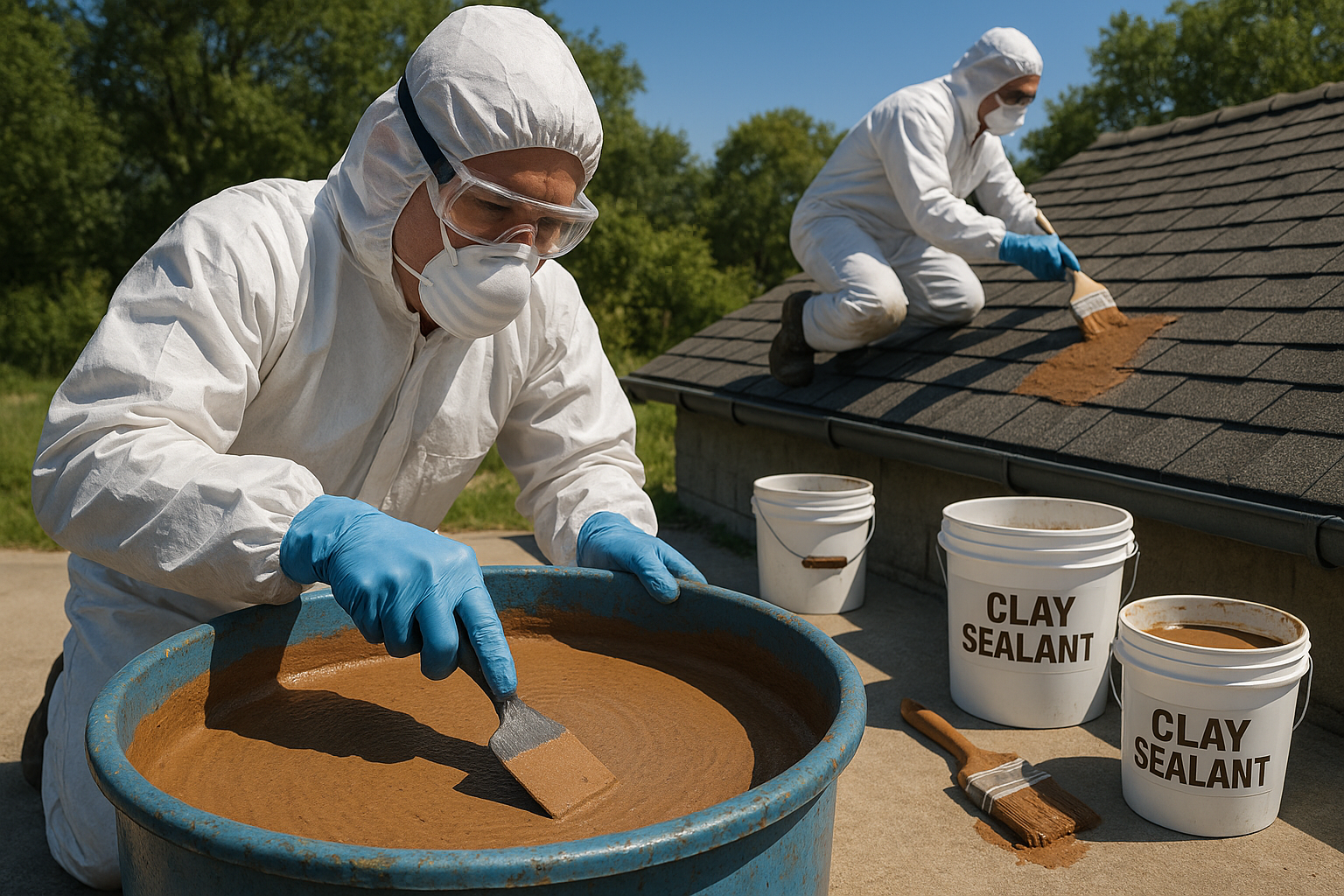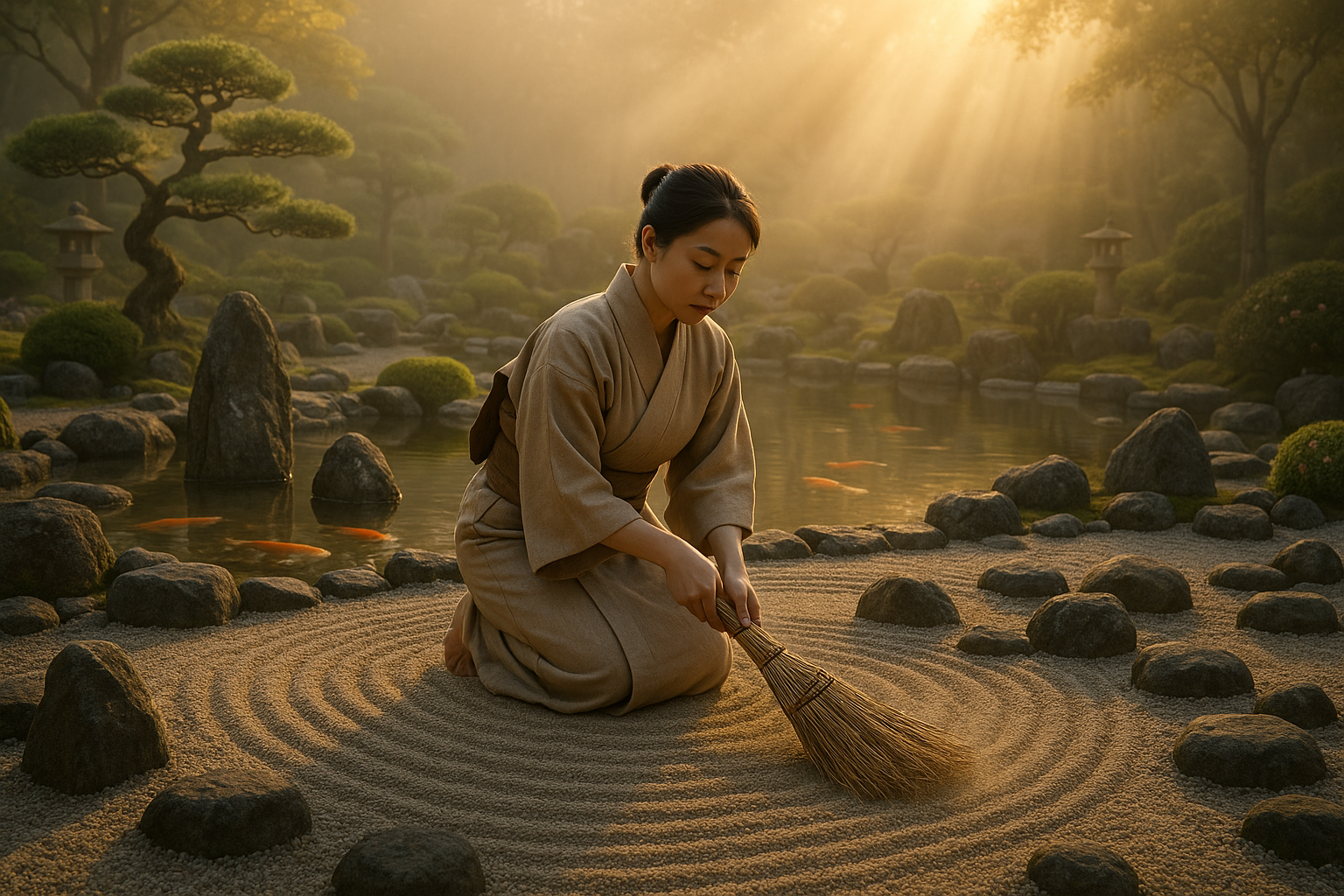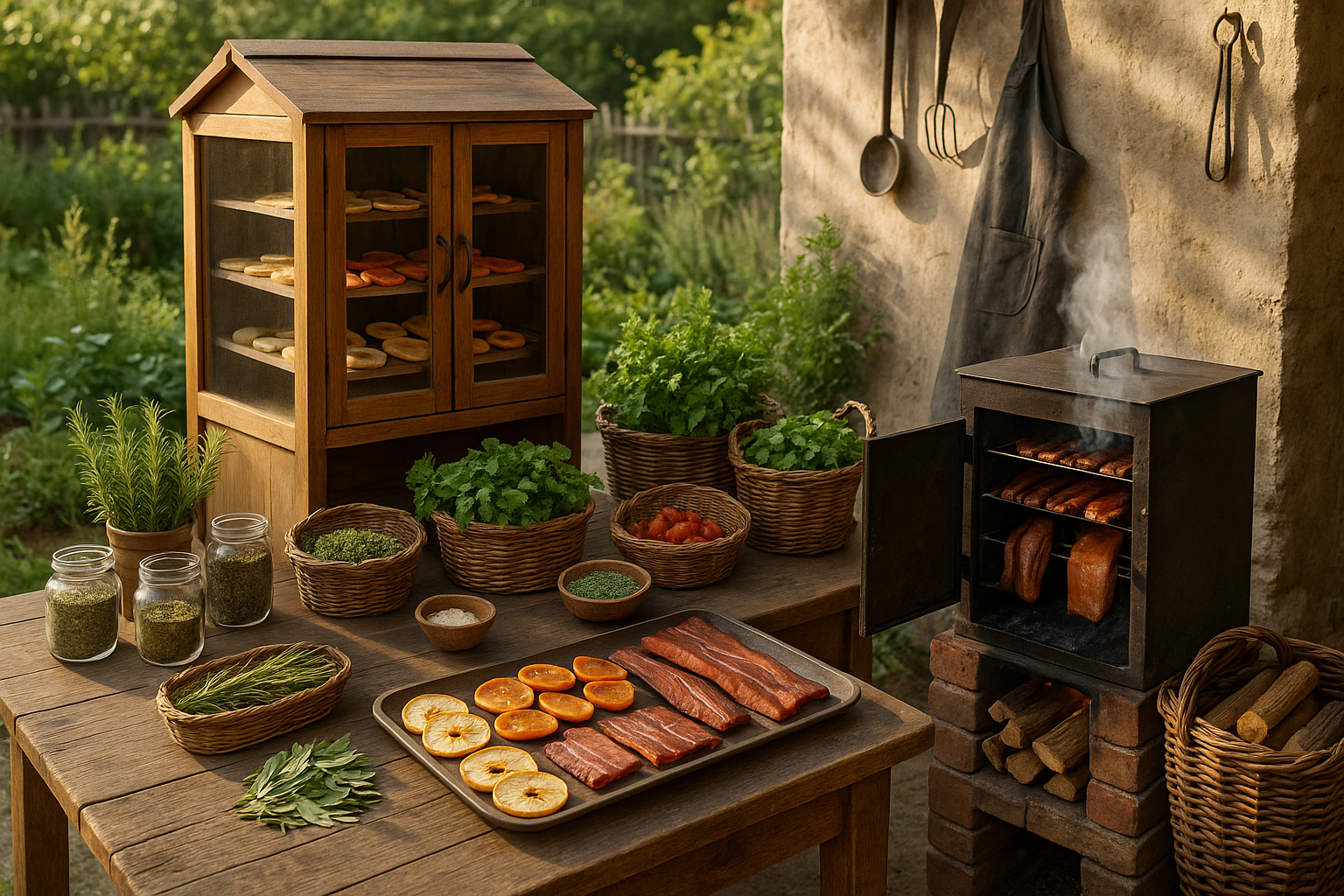In a world increasingly dominated by fast-paced technology and mass production, there is a growing desire to reconnect with nature and return to simpler, more sustainable ways of living. This yearning is evident in various facets of our lives, from the food we consume to the products we use daily. One area where this shift is particularly noticeable is in crafting and DIY projects. As more individuals seek eco-friendly alternatives to conventional crafting supplies, natural glues have emerged as a fascinating and sustainable option. Imagine creating beautiful crafts with adhesives that not only bond materials effectively but also align with a lifestyle that values environmental consciousness. 🌿
Natural glues have been used for centuries, long before synthetic adhesives became the norm. Our ancestors relied on these organic concoctions for building, crafting, and repairing, demonstrating that nature itself offers the solutions we need. With a little creativity and knowledge, you can harness the power of natural ingredients to create your own homemade glues. These natural adhesives not only reduce the chemical footprint of your crafts but also offer a delightful journey into the world of natural materials and their incredible properties. Whether you’re a seasoned crafter or a curious beginner, exploring the realm of DIY natural glues can transform the way you approach your creative projects.
In this article, we will embark on a detailed exploration of DIY homemade natural glues, perfect for eco-friendly crafting. We’ll delve into the history and benefits of using natural adhesives, examining why they are a superior choice for those committed to sustainability. From understanding the basic science behind what makes a glue effective to discovering a variety of recipes that you can easily whip up in your kitchen, this guide will equip you with everything you need to know to get started. You’ll learn how to make glues from common household items such as flour, milk, and even tree sap, each with its unique applications and strengths.
Moreover, we will discuss the environmental impact of traditional synthetic glues, shedding light on why transitioning to natural alternatives is not just a personal choice, but a necessary step towards preserving our planet. We’ll explore the harmful chemicals often found in store-bought adhesives and the potential health risks they pose. In contrast, you’ll see how natural glues offer a non-toxic, biodegradable, and kid-friendly alternative, allowing you to craft with peace of mind. By the end of this article, you will not only be inspired to try your hand at making your own glues but also empowered with the knowledge to make informed choices that benefit both your crafts and the environment.
So, are you ready to stick with nature and transform your crafting routine? Let’s dive into the world of DIY homemade natural glues, where creativity meets sustainability, and every project is a step towards a greener, more mindful existence. Whether you’re crafting with your children, working on a personal project, or simply exploring new eco-friendly practices, this guide will open the door to a new dimension of crafting. Prepare to be amazed by the simplicity and effectiveness of nature’s adhesives and join a movement that values creativity, sustainability, and a genuine connection to the world around us. 🌍
Introduction to Natural Glues
In recent years, there has been a significant shift towards more sustainable and eco-friendly practices in crafting and DIY projects. This movement is driven by the growing awareness of the environmental impact of synthetic materials and the desire to reduce our carbon footprint. One such area of interest is the use of natural glues, which offer an environmentally friendly alternative to commercial adhesives that are often laden with chemicals and toxins. Natural glues are not only better for the environment, but they also provide a safer option for individuals, especially when children are involved in crafting activities. In this article, we will explore various homemade natural glue recipes, their benefits, and how you can incorporate them into your crafting endeavors.
Natural glues have been used for centuries, long before the advent of modern synthetic adhesives. These glues are made from simple, readily available ingredients, such as flour, water, and natural resins. They are biodegradable, non-toxic, and can be easily customized to suit different crafting needs. The beauty of natural glues lies in their simplicity and effectiveness, allowing you to create strong bonds without compromising your commitment to sustainability. By learning how to make and use these glues, you can enhance your crafting experience while making a positive impact on the planet.
Let’s delve into some popular natural glue recipes and see how they compare to conventional adhesives in terms of strength, versatility, and environmental impact. We’ll also provide you with tips on how to optimize the use of these glues for different materials and projects. So, whether you’re a seasoned crafter or a beginner looking to explore more eco-friendly options, this guide will equip you with the knowledge you need to stick with nature.
Exploring Different Types of Natural Glues
There are several types of natural glues that you can easily make at home, each with its unique properties and uses. Understanding the different types of natural glues will help you choose the right one for your specific project needs. Here are some of the most common natural glue recipes and their applications:
Flour Paste Glue
Flour paste glue is one of the simplest and most cost-effective natural glues you can make. It requires just two ingredients: flour and water. This glue is ideal for paper and cardboard projects and is often used in activities like papier-mâché. To make flour paste glue, mix equal parts of flour and water in a saucepan, then heat the mixture over medium heat, stirring constantly until it thickens. Once cooled, it is ready to use.
While flour paste glue is not as strong as some other adhesives, it is perfect for lightweight materials and projects that don’t require a heavy-duty bond. It is also safe for children, making it a popular choice for school projects and arts and crafts activities. The downside is that it may not be suitable for outdoor projects, as it can break down in wet or humid conditions.
Gelatin Glue
Gelatin glue is a versatile adhesive that works well with wood, paper, and fabric. It is made from gelatin, a protein derived from animal collagen. To make gelatin glue, dissolve one tablespoon of unflavored gelatin in a half-cup of hot water, then add a few drops of vinegar to preserve the mixture. Once cooled, the glue can be stored in an airtight container for future use.
This type of glue forms a strong, flexible bond and is often used in bookbinding and woodworking. Gelatin glue is also reversible, meaning it can be softened and removed with heat, making it an excellent choice for projects that may need adjustments or repairs. However, because it is animal-based, it may not be suitable for vegans or those looking for entirely plant-based solutions.
Pine Resin Glue
Pine resin glue is a natural adhesive that has been used for centuries due to its strong bonding properties. It is made by melting pine resin and mixing it with a bit of beeswax to enhance its flexibility and durability. This glue is particularly effective for woodworking and repairs, as it can withstand both moisture and temperature changes.
To make pine resin glue, collect resin from pine trees, heat it in a double boiler until it melts, and then add a small amount of beeswax. Stir the mixture until well combined and allow it to cool before use. Pine resin glue provides a robust and durable bond, making it suitable for outdoor projects and heavy-duty applications. It is, however, more challenging to make and requires access to natural resin sources.
Comparing Natural Glues with Commercial Adhesives
While natural glues offer a range of benefits, it is essential to understand how they compare to commercial adhesives in various aspects. Here’s a comprehensive comparison of natural glues and commercial adhesives based on different criteria:
| Criteria | Natural Glues | Commercial Adhesives |
|---|---|---|
| Environmental Impact | Biodegradable, non-toxic, eco-friendly 🌿 | Often contain chemicals, can be harmful to the environment |
| Safety | Safe for children, non-toxic | May contain harmful chemicals, require safety precautions |
| Versatility | Limited to certain materials (e.g., paper, wood) | Wide range of applications, suitable for various materials |
| Strength | Variable strength, generally less than commercial options | High strength, suitable for heavy-duty bonding |
| Cost | Low cost, made from simple ingredients | Varies, can be expensive |
As seen in the table, natural glues offer significant environmental and safety benefits but may fall short in terms of versatility and strength compared to commercial adhesives. They are an excellent choice for projects that prioritize eco-friendliness and safety, especially for children and indoor use. However, for heavy-duty applications or projects involving diverse materials, commercial adhesives might be more suitable.
Practical Tips for Using Natural Glues
To get the most out of your natural glues, it’s essential to understand how to use them effectively for different crafting projects. Here are some practical tips and tricks to help you achieve the best results:
- Prepare Your Materials: Before applying natural glue, ensure that your surfaces are clean, dry, and free of any dust or debris. This will help the glue adhere better and create a stronger bond.
- Apply Evenly: Use a brush or spatula to spread the glue evenly across the surface. Avoid applying too much glue, as this can lead to longer drying times and weaker bonds.
- Allow Adequate Drying Time: Natural glues may take longer to dry compared to commercial adhesives. Be patient and allow sufficient time for the glue to set before handling your project.
- Store Properly: To extend the shelf life of your homemade glue, store it in an airtight container in a cool, dry place. Label your containers with the date and type of glue for easy identification.
- Test on a Small Area: Before using a new type of natural glue, test it on a small, inconspicuous area of your project to ensure compatibility and effectiveness.
By following these tips, you can maximize the potential of natural glues and create beautiful, sustainable projects that align with your eco-friendly values.
Further Learning and Resources
If you’re interested in exploring more about natural glues and sustainable crafting, there are numerous resources available to expand your knowledge. Books, online tutorials, and community forums are excellent starting points. Additionally, watching instructional videos can provide you with visual guidance and inspiration for your projects.
For a detailed tutorial on making and using natural glues, check out this informative video: [DIY Natural Glue – How to Make Glue from Scratch](https://www.youtube.com/watch?v=example). This video, available on YouTube, provides step-by-step instructions and tips for creating effective natural adhesives.
Embrace the art of eco-friendly crafting and discover the satisfaction of creating beautiful projects while caring for our planet. Happy crafting! 🌿

Conclusion
Creating your own natural glues not only brings a touch of creativity to your crafting endeavors but also aligns with an eco-conscious lifestyle that many of us strive to maintain. Throughout this article, we’ve journeyed through the fascinating world of DIY homemade natural glues, understanding their historical significance, practical applications, and the benefits they offer over conventional, chemical-laden alternatives. As we conclude, let’s revisit the key insights shared, emphasize the importance of eco-friendly crafting, and inspire you to incorporate these practices into your daily life.
We began by exploring the historical context of natural glues, tracing their roots back to ancient civilizations that relied on organic materials for construction and artistry. This historical perspective not only underscores the efficacy of these adhesives but also highlights our ancestors’ intuitive connection with nature. From simple mixtures of flour and water to more sophisticated concoctions involving tree resins and animal byproducts, these natural solutions have stood the test of time.
In the subsequent sections, we delved into a variety of recipes, each tailored to different crafting needs. We learned how to create basic flour paste, perfect for paper crafts and ideal for those just starting their eco-friendly journey. For those seeking more durable options, we explored recipes using milk and vinegar to produce casein glue, renowned for its strong bonding properties. Additionally, the inclusion of tree resin-based glue offered an insight into producing adhesives that are both robust and flexible, suitable for woodworking and more demanding projects.
The environmental benefits of opting for natural glues cannot be overstated. Unlike commercial glues that often contain volatile organic compounds (VOCs) and other harmful chemicals, homemade natural glues are non-toxic and biodegradable. This makes them a safer choice for both the environment and our health, particularly when crafting with children or in poorly ventilated spaces. By choosing natural glues, you’re reducing your carbon footprint and contributing to a more sustainable planet.
Moreover, making your own glue fosters a deeper appreciation for the crafting process, encouraging mindfulness and intentionality. It transforms crafting from a mere hobby into a practice of sustainability and self-sufficiency. Each batch of glue becomes a testament to your commitment to eco-friendly living, serving as a small but significant step towards reducing reliance on mass-produced products.
The adaptability of natural glues further enhances their appeal. By experimenting with different ingredients and proportions, you can tailor your adhesives to suit specific projects, achieving desired textures and strengths. This flexibility not only enhances the quality of your crafts but also empowers you with the knowledge and skills to innovate and personalize your creations.
As we embrace these natural alternatives, it’s crucial to share this knowledge within our communities. By spreading awareness of the benefits and feasibility of homemade natural glues, we can inspire others to make more sustainable choices. Engaging in discussions, sharing your experiences on social media, or organizing workshops can amplify the impact of this eco-friendly practice.
To support your ongoing journey, numerous resources are available online to deepen your understanding of natural adhesives and sustainable crafting. Websites like [The Spruce Crafts](https://www.thesprucecrafts.com) and [Mother Earth News](https://www.motherearthnews.com) offer valuable insights and tutorials that complement the knowledge shared here. These platforms provide a wealth of information to guide you in refining your techniques and exploring new applications for your homemade glues.
In conclusion, embracing the art of making natural glues is a celebration of creativity, sustainability, and innovation. It allows us to reconnect with nature, appreciate the resources it offers, and contribute positively to our environment. As you embark on or continue this journey, remember that every small step towards eco-friendly crafting makes a difference. We encourage you to apply what you’ve learned, share your experiences with others, and continue exploring the endless possibilities of sustainable creativity. Together, we can craft a more sustainable future, one glue stick at a time. 🌿
Thank you for joining us on this exploration of natural glues. We look forward to hearing about your experiences and seeing the beautiful, eco-friendly creations you bring to life. Please feel free to leave a comment, share this article with fellow crafters, or reach out to us with any questions or insights you might have. Happy crafting!




